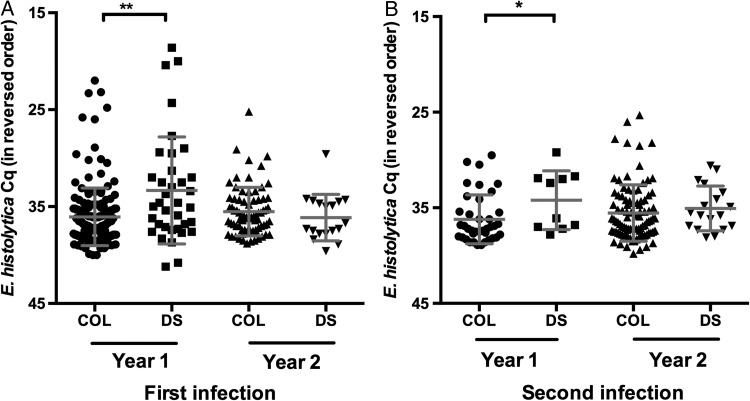Figure 2.
Increased parasite burden with diarrhea in first but not second year of life. The amount of Entamoeba histolytica in stool specimens from children who had diarrhea and those who were asymptomatic was determined by quantitative polymerase chain reaction (qPCR). Samples collected from an E. histolytica–associated diarrheal sample (DS) or a sample in which E. histolytica was detected but colonization was not coincident with disease (COL) during the first infection (A) and second infection (B). The mean and standard error are shown. The y-axis indicates the threshold value of the qPCR assay specific for E. histolytica. As the quantification cycle distribution was not Gaussian, Kruskal–Wallis 1-way analysis of variance was used to determine that this data set contained significant differences. The Dunn multiple comparison test was used to determine that the year 1 data were significantly different from each other. *P ≤ .05 and **P ≤ .01.

